Matador Network's Blog, page 1124
April 9, 2019
Hiking trails being built in the DMZ

If you’re tired of hiking mundane forest trails in the state park near your house, this new hike could be the perfect way to shake up your routine. Last week, South Korea approved a $3.9 million budget to build hiking trails in the Demilitarized Zone (DMZ) between the two Koreas.
The DMZ, about 155 miles long and 2.5 miles wide, is one of the most heavily fortified borders in the world. The project is an attempt by the two nations to convert the area into a zone designated for peaceful activity.
Three trails are slated to be built in Paju, Cheorwon, and Goseong, respectively, on the western, central, and eastern parts of the border. The Goseong trail will be the first to open, and available to tourists from late April on a test run. Local municipalities will be tasked with using the approved money to install toilets, security cameras, and purchase safety equipment for hikers. Protecting the environment is also purported to be a top priority during trail construction, with already existing natural routes being used as much as possible.
The trail is expected to be perfectly safe, though given its proximity to hostile North Korea, hikers might be a little on edge. 
H/T: Lonely Planet

More like this: 5 extraordinary hiking trails you won’t believe are in the United States
The post Hiking trails are opening in the Demilitarized Zone between North and South Korea appeared first on Matador Network.

April 8, 2019
What to do in Missoula, Montana
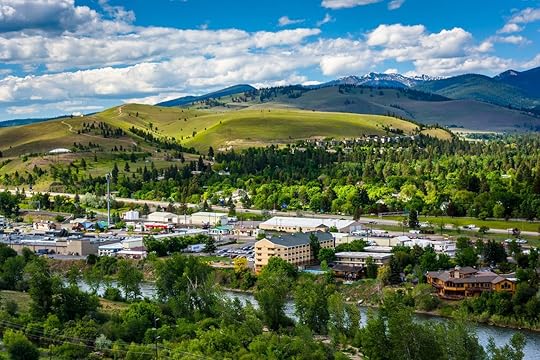
Next time you head to a national park, take a close look at the town you pass through on the way in. Many of America’s parks are anchored by a nearby hub, usually in between a big town and small city in size and too often overlooked by the RVs and VW buses passing through on their way to the park gates. Missoula is one such place, and it deserves your attention.
This enclave in western Montana has managed to move beyond its past as a resource-economy town and embrace its location in a new manner — as one of the most epic places for a nature-loving traveler to dive in for a few days. Missoula isn’t just a town to pass through on your way to Glacier National Park. Much like tourist-favorite Boulder is to Rocky Mountain National Park in Colorado, Missoula is an outdoor hub with a character all its own, and you should stop in for a few days to experience it.
Missoula’s economy looks towards tourism.
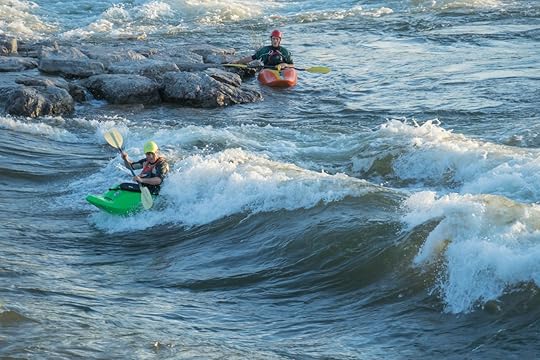
Photo: DSpataro/Shutterstock
Similar to the Boulders and Ashevilles of the country, Missoula is a mid-sized city where two main points ring true: The people here love their town, and they also love getting into the world just outside of it. The city is lined with hills, and you’re more likely to find a long-time resident spending a Monday afternoon on the river than at the office.
Missoula was, for most of its modern history, a lumber town with an economy driven by the mills and mines near the townsite. Since the 1990s, the city’s economy has shifted drastically, with education and healthcare becoming the top employment sectors, and the city seeing an increased focus on tourism. According to local newspaper the Missoula Current, Missoula County brought in $295 million in tourism dollars during 2018 and saw 850,000 passengers fly through Missoula International Airport, representing significant growth in both spaces.
Much of the tourism effort is directed at getting people outdoors, both in and around the city. In 2006, the city debuted the man-made “Brennan’s Wave” on the Clark Fork River as it passes through downtown, attracting kayakers — and even surfers — to the heart of the city. This July, the three-day Rec Con event debuts to bring even more attention to the outdoor access. And of course, there is always Glacier National Park, two hours to the north.
The outdoor access is as good as it is in Boulder.
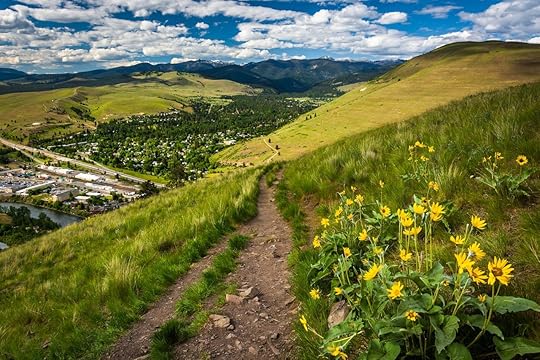
Photo: Jon Bilous/Shutterstock
Like Boulder, Missoula is a university town on the edge of expansive open space. Its downtown core and surrounding neighborhoods are lined with craft breweries and farm-to-table eateries lacking in smugness. You can also eat vegetarian if that’s your jam. But the real draw to Missoula is definitely the outdoor access.
Just outside of downtown Missoula, the Kim Williams Nature Trail leads into a system of trails heading up towards University Mountain and beyond. It’s an ideal spot for hikes and mountain biking throughout much of the year and, when snow falls, a solid snowshoe excursion. Also come winter, you can hit up Snowbowl, Missoula’s local ski hill. The mountain, about 30 minutes north of the city, is full of family-friendly terrain and shuns the mega-resort feel of larger destination ski areas.
Within an hour of city limits are enough hiking trails to keep you busy for the next decade, starting with the Rattlesnake Wilderness and Lolo Peak. And no matter when you come, you won’t have to wake up at 5:00 AM to find a parking spot at the trailhead, a perk rapidly disappearing from Colorado’s front range.
It’s a wonderland for road and mountain bikers.
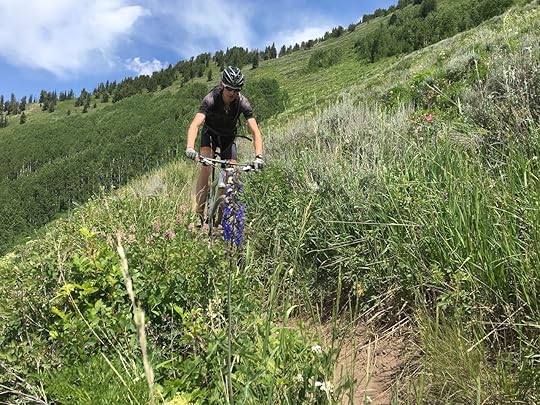
Photo: Kyle T Perry/Shutterstock
While you can certainly park your car at the trailheads near Missoula, there’s no stress should you not have one. In a town comprised of just 29 square miles, over 40 miles of bike lanes line Missoula’s roads and neighborhoods. Getting around via pedal power is, for many, the preferred method of transportation in the city, and you’d be remiss to leave either your road bike or mountain bike at home on a trip here. If you’re flying in, you could rent a bike from one of several cycling shops, like Missoula Bicycle Works.
In an effort to combat locals feeling overwhelmed by an increasing number of transplants and visitors (who may not know the rules of the road when it comes to cycling), Mountain Biking Missoula provide trail maps, gear information, events, and volunteer opportunities, and even an invitation to their Thursday night group rides to newcomers and visitors. They seem to have embraced the idea that it’s better to educate and inform than to shun and turn your shoulder.
Missoula still embraces its Big Sky Country roots.

Photo: Cannon Colegrove/Shutterstock
The number one criticism people lobby at outdoorsy towns like Boulder nowadays is that it’s been taken over by insufferable hipsters who care more about the town’s aesthetic than the outdoor opportunities it provides. While a tree-hugging, mustachioed microbrewer can certainly feel right at home here, Missoula is rough around the edges in a way that Boulder never was.
There’s still a long way to go in terms of population diversity, but there’s no one flannel-shaped mold you need to fit into to be a Missoula local. Its big skies are home to rompers and rollers that tend to look at the world a little differently than big city folk and who couldn’t really care less how you live your life so long as you have respect for the natural surroundings.
It’s because of this that no matter how many southern Californians or beleaguered New Yorkers decide that Missoula is the place to fix their existential crisis, the town won’t be leaving behind its values anytime soon. Missoula will still be its unassuming self, long after the coastal flock spots a bear in the Clark Fork River that runs through town — and runs screaming back to LA’s Chavez Ravine. 

More like this: How to use Asheville as your base for Great Smoky Mountains National Park
The post Missoula, Montana, is the new Boulder — minus the hipsters appeared first on Matador Network.

Zac Efron YouTube travel show

Some pretty big Anthony Bourdain-sized shoes are in need of filling, and someone you might not expect has stepped up to try and do it: Zac Efron. Efron has started a vlogging channel on YouTube and a video series called “Off the Grid,” featuring himself and his brother Dylan on travel adventures around the world. The channel was founded on the idea that stepping out of your comfort zone is one of the best ways to grow, and it’s intended to inspire others to follow in Efron’s footsteps and venture into the unknown.
In the channel’s description, Efron bills “Off the Grid” as “Outdoors and adventure with my best friend and brother, Dylan. Come along with us as we travel the world and get out of our comfort zones!”
In the first episode, Zac, Dylan, and six friends spend four days visiting Lake Mohave in Arizona. The vlog includes the six-hour drive from their house in Los Angeles to Lake Mohave, the group befriending a wild donkey in the water, figuring out how to camp and cook food, getting in trouble for feeding the fish, and jet-skiing on the lake.
While there isn’t any specific information on how often episodes will be released, he does ask fans to “check back weekly for my travel adventure series.” So Efron fans certainly won’t be starved for content anytime soon. 
H/T: Lonely Planet

More like this: Why it’s so important to acknowledge black travelers
The post Zac Efron has a new travel show on YouTube appeared first on Matador Network.

Japan beaches you should visit

Japan is an archipelago made up of 6,852 islands — albeit several that are just 3,000 feet in circumference. Even so, it has an astonishing 18,486 miles of coastline, putting it at the top of the list of shoreline-rich countries. (Only Canada, Greenland, Russia, Indonesia, and the Philippines have more, and of those, the first three have frigid waters.) That means that Japan is awash in wonderful beaches. It also has its very own, unique beach culture. On your next trip to Japan, make sure to include some beach time.
First, know your beach rules.
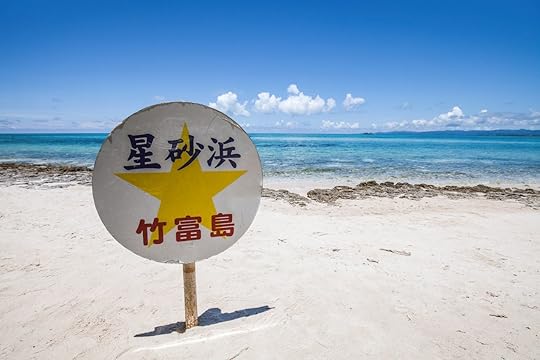
Photo: Jihun Sim/Shutterstock
Japan has a long history as a sovereign nation, with a love of martial arts and precise rules for almost every activity. Swimming and beachgoing are no exceptions. There are 18 martial arts in Japan, and swimming is one of them. There is even a Japanese Swimming Federation that works to preserve the art of “traditional combat swimming” and also holds competitions for people of all ages.
As part of this tradition, famous martial artists have been known to train in flash floods to heighten their awareness of swimming. Try wielding a stick or a gun or wearing samurai armor in water, and you’ll begin to understand some of the history of swimming in this island nation.
As for rules, you should know that there is an official opening of beach season called umibaraki, or sea-opening, before which swimming is not allowed! This happens at different times on different beaches. Organizers make sure to clean up the beach and put out nets to keep bathers safe from marine life before the umibaraki ceremony. Japan’s public cleanliness policy also means you’re unlikely to find any trash receptacles, so pack out what you pack in when visiting beaches.
In addition, because of the history of the yakuza, or gangsters, who are practically the only members of Japanese society with tattoos, you would need to cover any tattoos before going to a public swimming area. However, there are handy sites, like this one in English, telling you where you can go if you have tattoos.
On a happier note, unlike many Western countries, Japan does not have open container laws — so you’re welcome to imbibe alcoholic drinks while at the beach.

Photo: eyedear/Shutterstock
Some of the fun traditions at Japanese beaches include sukiwari, which is kind of like Marco Polo with a watermelon and a stick. One person is blindfolded, given a long wooden stick called a boken, and spun around, after which he’s supposed to whack open the melon on a tarp on the beach — all while observers attempt to mislead him. Eventually, after someone is successful, everyone shares in the sticky feast.
While you may have to look for signage alerting you to dangers like jellyfish, you can also look for beach houses where they may rent out bathing suits, boogie boards, and body boards; serve food and alcohol; and offer locker rooms. And unlike the US, where fireworks happen just once a year, in Japan, fireworks displays are the symbol of summer. Ask around about local hanabi events.
Because of the length and varied ecosystems of Japan, its beaches can range from volcanic sand to pebbles to white sand, so you can take your pick.
Ichinomiya, Boso Peninsula — Tsurigasaki beach
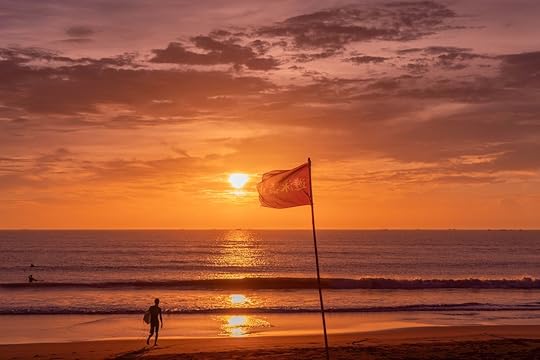
Photo: By the sea in Japan/Shutterstock
Although it was in Okinawa where occupying American soldiers first introduced the Japanese to the sport of surfing, it’s the town of Ichinomiya that will host the very first Olympic surfing competition in 2020 at Tsurigasaki Beach. Ichinomiya is located on the Boso Peninsula, just across Tokyo Bay from the national capital. To watch pros and locals, find the torii gate along the beach on the southern end of Road 30, but do not attempt to surf here; unspoken rules are the most important in Japan.
Luckily for visitors, Ichinomiya — which has been growing since the 1980s, filling with those who want to surf year round — will only become more tourist-friendly. While most small towns in Japan are emptying of young people, Ichinomiya is experiencing a revitalization, with new surf shops, restaurants, and homes, as well as 600,000 visitors a year.
Shonan Region, Kanagawa — Kugenuma and Enoshima beaches

Photo: okimo/Shutterstock
“The California of Japan” is the nickname for the Shonan region of Kanagawa, centered on Enoshima (Eno Island) southwest of Tokyo. It’s been a swimming resort since California was settled by European Americans, and in a country obsessed with hard work and sacrifice, it has a bit of a hedonistic air about it. That’s because once upon a time only the elite could or would afford to spend time laying around on beaches.
For surfing, hit Kugenuma Beach, near Kugenuma Kaigan station. Lifeguards are on duty during July and August. Beach volleyball courts are free to use, and hot water showers, foot washes, lockers, umbrellas, beach toys, and lounge chairs are available to rent everywhere. For swimming, hit a couple of the Enoshima beaches, which are also patrolled by lifeguards and lined with beach huts. After that, check out Chigogafuchi, a marine plateau with an elevated walkway from which you can see Mount Fuji — hopefully at sunset.
The nearby Enoshima Iwaya Caves, created by coastal erosion, have been worshipped for centuries. They are rumored to have been visited by Kobo-Daishi, who founded Shingon Buddhism, and Minamoto no Yoritomo, founder of the Kamakura Shogunate. You can borrow candles to check out the statues and exhibits inside.
Sennan, Osaka Prefecture — Pichipichi, Tokimeki, and Tannowa beaches
View this post on InstagramA post shared by Tây Thi タイテイ (@chisi_katory) on Jul 21, 2018 at 8:23pm PDT
At Tannowa Tokimeki in Sennan in Osaka Prefecture, you can see Japan’s only permanent beach volleyball stadium, Shiosai Beach Volleyball. The best beaches are Pichipichi and Tokimeki, both in Satoumi Park, where the region’s midsummer Osaka Marine Festival is held. Little kids will enjoy the Iruka (Dolphin) Park, with its octopus slide and Tarzan rope swing. On Tannowa Beach, you can dig for clams to your heart’s content.
Noto Peninsula, Ishikawa Prefecture — Chirihama Nagisa Driveway
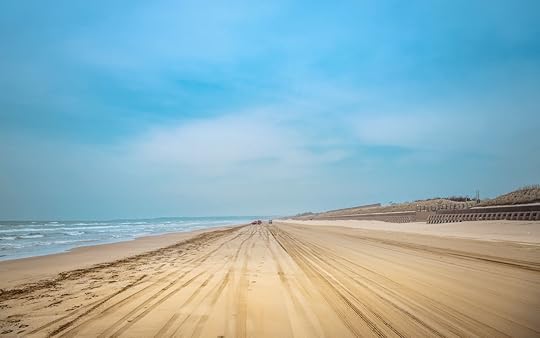
Photo: mTaira/Shutterstock
We don’t normally think of cars and beaches together, but auto (and bicycle) enthusiasts can visit Chirihama Nagisa Driveway on the Noto Peninsula in Ishikawa Prefecture and drive along the five-mile stretch of hard sand beach between mid-March and late November. Stop for photo ops, seashell gathering, or a meal. A tasty repast might include grilled clams and the local delicacy, grilled turban snails (sasae no tsuboyaki) washed down with sake and beer. Among the fascinating environmental and manmade features nearby are rock formations, a sea salt operation, and rice terraces.
Shimoda, Izu Peninsula — Shirahama beach
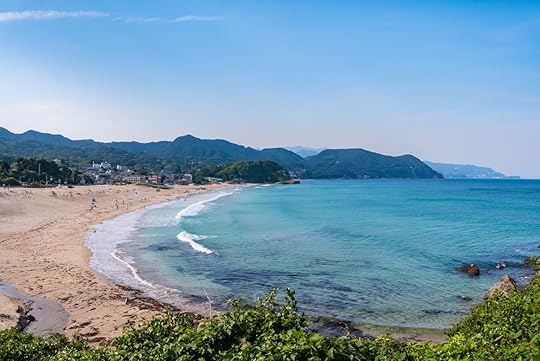
Photo: okimo/Shutterstock
Shirahama in Shimoda on the Izu Peninsula is one of Japan’s famous white sand beaches, just a 10-minutes bus ride from Izukyu Shimoda Station. Because it’s the only place in the world where, according to UNESCO, “two active volcanic arcs collide” with a unique “continuous volcanic geological history,” the entire Izu Peninsula has been designated as a UNESCO Global Geopark.
Beyond the beaches, you’ll find evidence of Japan’s opening to the West — after General Perry insisted on it — with gunboats in Shimoda. There is also great hiking. Try the Jogasaki Coast, which features the Kadowaki Lighthouse, a suspension bridge, the Flower Park Museum, and Renchokuji, a temple. The area also has hot springs. If you want to combine ocean viewing with hot springs, book a room at the ryokan Bousui in Shizuoka, built in 1958, which boasts open-air public baths right on the coast.
Honshu Island, Iwate Prefecture — Jodogahama beach

Photo: yoshimi maeda/Shutterstock
For those who want to experience more of the ocean than just the beach, Jodogahama Beach is a little more than five hours from Tokyo, including two-and-a-half hours on the bullet train. It’s in Iwate Prefecture on the northern end of the main island of Honshu. Called one of Japan’s best 100 beaches, it is situated on a clear, sheltered inlet.
In 2011, the tsunami destroyed some facilities, but all have been rebuilt. You’ll find a visitor center, walking trails from there to the beach, and several options for boat cruises. Among the cruising options is the Blue Cave Cruise, which departs from Marine House and takes you to Aonodokutsu, a cave filled with cobalt blue water and accessible only by sea.
Ogasawara Islands — Kominato and Kopepe beaches

Photo: tororo reaction/Shutterstock
Far, far from Tokyo (620 miles, to be exact) are the Ogasawara Islands, which you will reach via a 25.5-hour ferry ride. It will be completely worth it. As in Okinawa, the swimming season here lasts from June to October. At a comfortable 77°F, Chichijima, the largest inhabited island of the group, will beckon you to its white sand beaches and clear blue water. It’s a snorkeling, sunbathing, and swimming paradise.
Kominato Beach and Kopepe Beach are near the Kominato Kaigan bus stop, and the latter features underwater markers pointing out coral species unique to these islands. Local delicacies include sea turtle sashimi and shimazushi, which means island sushi, as well as nigiri sushi made of marinated sawara, or Spanish mackerel, which is served with karashi mustard rather than wasabi.
Hokkaido — Kamome Island shore
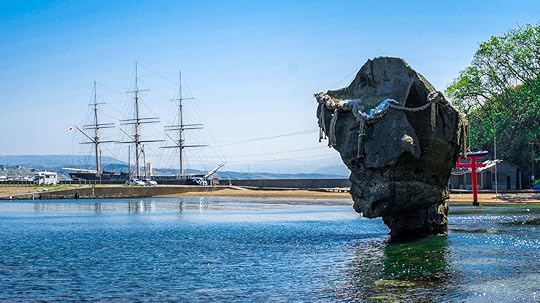
Photo: Siravich Suvithayasiri/Shutterstock
Kamome Island in Hokkaido is at about the same latitude as Toronto, so you might not think of it as a beachy place. But this piece of land, which is actually a peninsula connected to the mainland by a 1,600-foot sandbank, is both a natural breakwater for the port of Esashi and a superb place for swimming, camping, and fishing in the summer. Just 660 feet wide and 0.62 miles long, with 1.6 miles of coastline, it’s a darling site for a cozy day of outdoor activities — and a history lesson.
The sacred Heishi rock, which rises like a bulb out of the sea, is festooned with the Shinto symbol of nature’s awesomeness: a shimenawa, or straw rope with paper streamers interwoven. According to legend, at some point in the distant past, the herring, for which the island is still known today, disappeared from the sea. A fortune-teller threw a bottle of magical liquid — some say water, some say sake — into the sea and the herring returned.
The bottle itself turned into the Heishi rock, which represents the god of the Sea of Japan. During the Edo period, it was worshiped as Bentenjima (Benten Island), after the Hindu goddess of water and fishermen, Saraswati. During the first weekend of July, strapping young men are blessed at the local shrine and, dressed only in fundoshi (a strip of cloth wrapped around them like a pair of trunks), swim out to the rock carrying a new, 1,000-pound replacement shimenawa. The two-day festival includes a rowing competition, a parade of people wearing traditional costumes, taiko drumming, and a karaoke contest.
Okinawa — Yonaha Maehama beach (Miyako Island) and Nishihama beach (Hateruma Island)
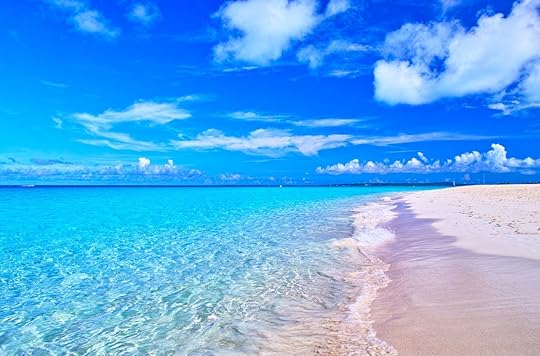
Photo: 7maru/Shutterstock
At the other end of Japan are the 21 glorious tropical islands of Okinawa. Miyako Island, situated on the same latitude as Miami, Florida, is known as the best diving spot in Japan and hosts divers year round. Scuba instruction to earn NAUI certification over three days costs just ¥55,000 (about $500). Diving tours by Miyakojima Diving Aquatic Adventures take divers to three islands to see manta rays, tropical fish, sharks, underwater caves, shipwrecks, sea turtles, and coral.
Of Miyako’s beaches, Yonaha Maehama may be the best beach in East Asia, but it’s rivaled by Nishihama, on Hateruma Island, the southernmost inhabited island in Okinawa. Turquoise water plus silky sand equals the best vacation ever, and it’s just two and a half hours by bus and ferry from the New Ishigaki Airport. 

More like this: The 5 most breathtaking shrines and temples in Kyoto, Japan
The post The best beaches all over Japan — and the rules you should know before visiting them appeared first on Matador Network.

Best LGBTQ travel bloggers

No matter where you’re headed for your next adventure, it’s likely that you at least suffer through that brief moment of apprehension that every queer traveler experiences. No matter how careful you intend to be during your travels, there is still no way to know just how accepting the culture will be upon your arrival. Enter these
Underrated European wine regions
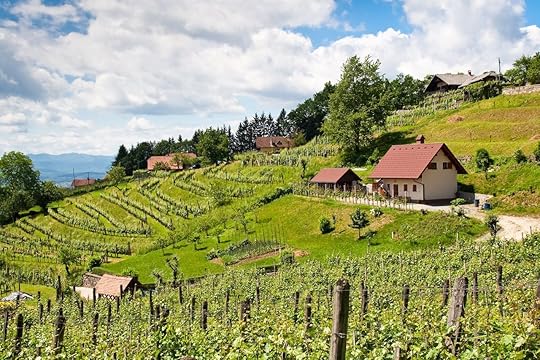
Western Europe’s beautiful wine regions get plenty of attention, and there’s a good chance you recognize them by name: Champagne, Bordeaux, and Rioja just to name a few. But there’s a whole world of wine just waiting to be discovered further afield. While often overlooked, Eastern and Southern Europe’s wine regions are beautiful in their own right, brimming with history and rich winemaking traditions. They also tend to be much more affordable than in the west.
The next time you’re looking for a wine adventure through Europe, get off the beaten path for some of the continent’s most underappreciated winemaking nations.
1. Slovenia
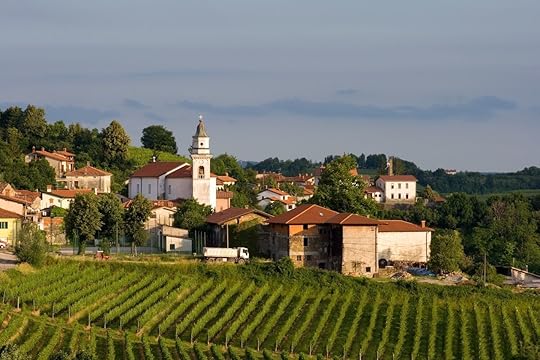
Photo: sn0wball1/Shutterstock
Home to the spectacular Julian Alps and picture-perfect Lake Bled (which has some of the most enticing cream cakes), it’s not surprising that Slovenia also has some of the prettiest wine country in Europe. A must-see is Goriška Brda, a wine-producing region near the Italian border that bears more than a fleeting resemblance to Tuscany with its idyllic countryside, villas, and rows of vines on green rolling hills.
Many familiar varieties like pinot grigio and merlot are grown in Goriška Brda, but it’s known primarily for the sumptuous and complex regional variety, rebula, as well as its innovative winemakers and experimentation with orange wines. For a special occasion, dine at nearby Hiša Franko, which has a well-curated wine list and kitchen led by the 2017 World’s Best Female Chef, Ana Roš.
Take advantage of the fabulous hospitality in farm stays in the region, or base yourself in the village of Šmartno for the Brda and Vino festival. Held in late April, the festival is a great opportunity to taste the wines paired with regional dishes.
2. Croatia

Photo: xbrchx/Shutterstock
While Game of Thrones filming locations helped put Croatia on travelers’ radars, the country is relatively unknown for wine (despite the quantity consumed by Tyrian Lannister). Part of the reason why is because you’d be hard-pressed to find much of it available outside of the country.
One of the better-known Croatian grape varieties is plavac mali, which is similar in taste to zinfandel with an ancestral varietal connection. This versatile red is arguably best tasted on the island of Hvar in the town of Jelsa on the north coast, where wineries like Tomič and Dubokovič are based. A ferry ride farther out into the Adriatic takes you to the island of Korčula, where you should try wine made with the indigenous pošip grape. Usually a crisp white with apple notes, this wine is a great pairing with seafood, which is bountiful on Korčula.
If the delicious, albeit difficult-to-pronounce, wine is not tempting enough, Croatia’s other pleasures include a warm climate, beautiful beaches, picturesque fishing villages, and lovely cheese, olives, and seafood.
3. Romania

Photo: PUSCAU DANIEL/Shutterstock
Underrated both as a holiday destination and wine producing nation, Romania actually has one of the oldest winemaking traditions in the world, which is becoming more accessible thanks to the emerging enotourism industry in the country.
Thanks to Dracula, wine is not the first thing people think of when they think of Transylvania, but the region’s hills hide one of the prettiest spots for wine production. Dobrogea may be the most attractive wine region in Eastern Europe, however, with its picturesque stretches by the Black Sea coastline. It’s home to the Danube Delta — a UNESCO-listed biosphere reserve — as well as numerous wineries producing familiar varieties like chardonnay and pinot noir.
The quality of wine is improving all the time with the investment of EU funds, so visiting Romania provides one of the best value for money winery experiences right now. The Bucharest Wine Fair, held May 11-13, showcases the best the country has to offer.
4. Hungary
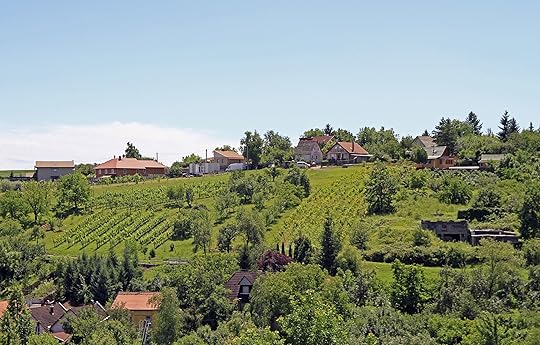
Photo: Andrew Babble/Shutterstock
Hungary may already be on your wine radar for producing the world-class sweet wine tokaji. However, northeast of Budapest around the town of Eger lies a lesser-known wine region.
The intriguingly named “Valley of the Beautiful Women” provides a real off-the-beaten-track wine tasting experience. The most popular wine from the region is a bold red known quite wonderfully as “Bull’s Blood,” or Egri Bikavér in Hungarian. According to legend, Hungarian soldiers were fiercely emboldened by their consumption of a mix of wine and bull’s blood. Today, Bull’s Blood is just a blend of three or more grapes. Sample it at one of the 200 cellars in the area, many of which are within walking distance of one another, or for a festival atmosphere attend the Bikavér Feast (July 5-8) to taste the wine paired with the region’s best dishes.
Although Eger is quite close to Budapest, it’s well worth staying overnight to allow additional time for exploring its Baroque architecture and thermal pools. 

More like this: Why wine lovers should be planning a trip to Moldova
The post 4 underrated Eastern European wine regions to visit before they’re famous appeared first on Matador Network.

How to stay healthy on long drives

Driving is as much a summer tradition as barbecues and hoards of little kids at literally any museum you ever visit. And as we approach peak road trip season, we’re also quickly reminded that we share our highway system with the slow-moving behemoths that make up the backbone of our nation’s logistical infrastructure: big-rig trucks. While for us non-professionals, a summer road trip can be a liberating break from the daily routine, for the guys and gals behind the wheels of those 18-wheelers it’s an endless, thankless job that requires some serious mental endurance.
We consulted with Commercial Truck Trader — an online marketplace for big rigs — to find out how the professionals stay sane while they’re on the road. Here are seven tips they gave for keeping your mind right during endless drives.
Stay connected.
For us non-big-rig-operators, trying to disconnect from our perpetually connected world is a challenge. But staying connected to the world outside the road is key for truckers. The highway is a long, lonely place and reminding themselves that there are people out there who care is crucial for keeping sane.
Calling home every night is a popular way of staying connected, but that’s been done since the advent of payphones. Technological advancements allow truckers to do stuff like FaceTime and video chat, as well as exchange short voice messages with people who may be in different time zones. Drivers even use Google calendars to schedule communication when loved ones have busy schedules. Social media is a popular tool as well, using little things like comments and direct messages to keep up on life back home.
But many truckers still prefer to go old school and do crazy stuff like writing letters and postcards from wherever they’re staying. The handwriting feels more personal and gives those at home something to hold onto that’s not on a screen.
Bring someone along.
Much like with any work trip, drivers sometimes bring people along with them for the ride, both to stay awake and stay in their right mind. Married couples often times drive together, opting to keep their marriage on the road rather than on the rocks. Friends, relatives, or even just curious acquaintances make the human connection just as important as the break from asphalt monotony.
Other truckers bring along a different kind of friend: the kind with four paws and a waggy tongue. Just like they’ve become more popular in restaurants, airplanes, and breweries, dogs have become more common in big rigs, providing the dual purpose of companionship and frequent exercise during walks. And the occasional excuse to meet new people when in different places.
Take care of your body.
Truckers aren’t exactly known as bastions of great health. Or even mildly-acceptable health. Not that anyone’s passing judgment; when your best food options all have to be within earshot of a highway offramp, it’s hard to eat healthily. Throw in hours sitting in one position, and it’s a recipe for poor health.
But staying healthy physically also helps drivers stay healthy mentally. Drivers now are stocking up on healthier food like nuts, lean meats, and fresh vegetables before leaving and using those foods as road fuel instead of the usual drive-thru cuisine. They will also pack bicycles and running shoes for quick workouts while at truck stops, typically during morning or afternoon rush periods when traffic is heaviest anyway. Some even bring small weights to lift while driving.

Photo: Milos Muller/Shutterstock
Make sure you sleep enough.
Though long-haul drivers are notorious for missing crucial sleep to make deadlines, many have learned that the extra few hours they spend sleeping makes them more productive in the long run. The aforementioned exercise also helps drivers’ stave off nervous energy and thus sleep better at night. Many also avoid any kind of stimulant later in the day so their minds can relax, and use white noise machines to help the sleeping process.
Keep your mind active.
The road can be hypnotic, where miles of straight pavement and blurry white lines can lull the mind into a beam-like trance. This combination of boredom and concentration can dull the brain, and breaking the spell is one of the most important parts of keeping it together while driving 14 hour days. The CB radio is a popular form of keeping the mind moving, as are phone calls home (via Bluetooth) and listening to traditional radio.
Some truckers take their job as a chance to learn a new language, bringing language tapes or CDs along so they can get smarter while they work. Others opt for audiobooks or podcasts. Still, others bring new forms of music to keep the learning centers of the brain active while doing a fairly mindless activity. Some sing along to keep cognitive function sharp.
Don’t self-medicate.
Another thing truckers have been historically notorious for is an abuse of alcohol and drugs to cope with the long hours and loneliness the job demands. While taking a gas-station alertness pill, or other drugs, might keep a driver awake through the night, they do nothing to help mental stability, and most truck drivers nowadays are mindful of this.
Get regular medical exams.
Though not an on-road trick, with the average long-haul trucker clocking in at 55 years old, any kind of chronic health problem can make a trip mentally taxing. So nipping things like heart disease, muscle cramps, strains, stress, high blood pressure, and other job-related issues in the bud can make for a clearer mind and an easier time working. Though time at home is scarce, and most drivers prefer to spend it with family, making sure health doesn’t deteriorate makes a huge difference behind the wheel. 

More like this: How to eat healthy while traveling, according to three nutritionists
The post How long-haul truck drivers stay sane on the road appeared first on Matador Network.

British woman detained for stealing
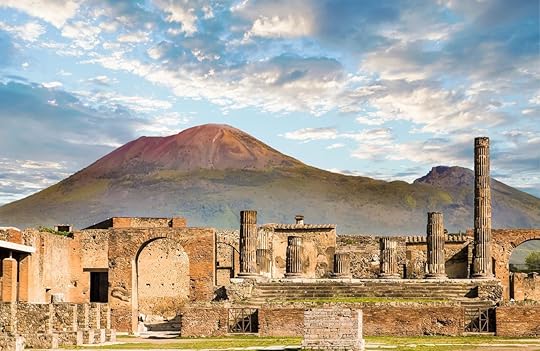
We know tourists are capable of the worst — they vandalize ancient structures and steal protected Komodo dragons. The latest case of bad tourist behavior is a 21-year-old British woman, who, while visiting the famous archaeological site of Pompeii in Italy, crossed a protective railing in the House of the Anchor, and used a tool to remove mosaic tiles from the floor. Staff called the police, and the woman was detained as she tried to leave. Damages amounted to about $3,378, according to the site’s manager.
Unfortunately, this isn’t the first incident of theft at the famous archaeological site. In 2016, an American removed a piece of marble from the floor of the House of the Small Fountain, and back in 2014, a guilt-ridden Canadian actually returned an artifact she had stolen from the Pompeii amphitheater during her honeymoon 50 years earlier. According to The Local, several thieves have similarly returned their stolen items, with letters of apology, claiming the items were cursed.
An exhibition of these returned artifacts, complete with the letters of apology, is now on display in Pompeii in hopes of deterring future thieves. 
H/T: BBC

More like this: Naples may be rough around the edges, but here’s why we love it anyway
The post British woman arrested for stealing mosaic tiles from Pompeii appeared first on Matador Network.

The best things to do in Chiang Mai

Chiang Mai is well known as a thriving base for digital nomads visiting Asia. The laidback city in northern Thailand has a mesmerizing combination of fascinating temples, bustling night markets, and modern, chic cafes. It’s also a getaway to offbeat corners of Thailand, far from the crowded city environment of Bangkok. Surrounded as it is by leafy tropical jungle and sheltering mountains, Chiang Mai also has access to some excellent outdoor adventures. Here are a few of our favorites.
Hiking and trekking in the lush jungle
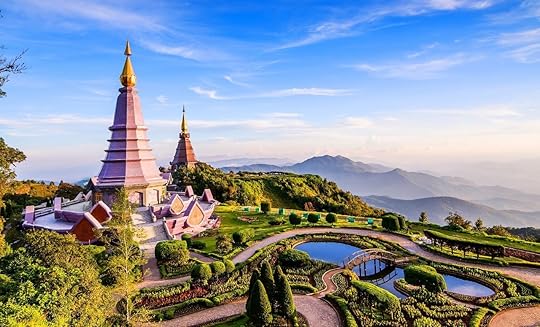
Photo: Take Photo/Shutterstock
Doi Inthanon National Park is home to the highest point in Thailand. It also houses some of the most breathtaking waterfalls in Thailand, such as Wachirathan, Sirithan, and Mae Ya waterfalls. You could opt for the one-day trek, but there are two-day and three-day trekking tours as well. The green carpets of tree-clad mountains are often swathed by the mist, providing stunning photo opportunities.
Day visitors can choose the Kew Mae Pan Nature Trail, a circular trail that covers 21 stops, including the sites of Phra Mahathat Napamaythaneedol Chedi and Phra Mahathat Napapoommisiri Chedi. These two royal pagodas were built to commemorate the birthdays of King Bhumibol Adulyadej — who was king of Thailand for six decades until his death in 2016 — and his queen.
Two important things to note: The trail is closed during the rainy period of June through October. Also, hiring a local guide is mandatory for this trail; it costs 200 Thai baht, or just over $6.
Visiting the Sticky Waterfalls

Photo: kitsanakorn maneerat/Shutterstock
Crystal clear water flows swiftly over the limestone surface of the Bua Tong Waterfalls. The creamy limestone, in contrast to the greener jungle, aren’t slippery — hence the cascades’ sticky moniker. You can climb up over the rocks without fear of sliding.
Once on top, look for a sign that says Nam Phu Chet Si. A hidden gem, the blue water spring is believed to have some healing energy. While the bottom doesn’t have a huge base pool for swimming, you can relax at one of the smaller pools.
A private vehicle will take one hour to reach the falls from the Old Town of Chiang Mai. It’s also a popular picnic spot for locals. You can go here on your own or opt for a tour with a local expert at TakeMeTour. This mindful travel organization provides community-based travel experiences that assist in lifting up local families.
Whitewater rafting in Mae Tang River
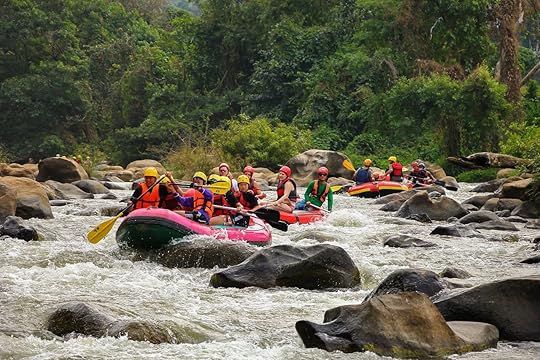
Photo: THRUS PANYAWACHIROPAS/Shutterstock
Fifteen miles from the Old Town, the Mae Tang River stumbles down the jungly mountains, providing the opportunity for a number of companies to operate kayaking and whitewater rafting tours. Monsoons may not be your cup of tea, but the swelling rivers during the rainy season are the best for whitewater rafting in Chiang Mai. At this time of year, though, the gushy waters are brown in color.
A number of rapids are suitable for beginners and more experienced rafters. You can choose a day trip or, if time permits, stay a night in a village homestay and join a two-day rafting tour. The tours run from July to March, but the monsoon swells cease in October.
Seeing the Mae Hong Son Loop on a motorcycle

Photo: Matyas Rehak/Shutterstock
Mae Hong Son Loop is one of the most popular motorcycling loops in Southeast Asia. Chiang Mai can be the starting point of this multi-day adventure; you can rent motorcycles or semi-automatic scooters in town. The lush mountain scenery will blow your mind, and you can stop for a dip at a few cascading falls along the way. With overnight stops at Mae Sariang, Mae Hong Son, and Pai, the circular trip can be completed in four days, but you can extend your trip with longer stays.
However, avoid visiting the Karen Lahwi tribe, popularly referred to as the “long neck tribe.” The young girls in the tribal community are forced to wear heavy neck rings that are increasingly lengthened over time. While the practice has cultural roots, today it is more about bringing in tourist money. The practice causes irreparable damage to the women, permanently depressing collarbones and shoulder blades.
Zip-lining in a rainforest

Photo: Flight of the Gibbon/Facebook
While a plethora of zip-lining operators have mushroomed over the years, Flight of The Gibbon has one of the longest zip-lines in the region. It’s also focused on gibbon conservation. In addition to specifically working on tree planting and maintenance, the company believes that community-sustaining projects like ecotourism can empower locals to care for their forest areas.
Flight of The Gibbon is an hour’s drive from the center. If you’re lucky, you’ll see wild gibbons — small apes that move swiftly across the treetops — as you glide across the canopy. The adventure takes two and a half hours, and there are three sessions per day. Start early and go for the sunrise session. Seeing the sun’s golden rays flickering through the tropical canopy is magical.
Seeing elephants in Chiang Mai

Photo: Oriol Querol/Shutterstock
Thailand is one of the best countries to see wild elephants. However, make sure you don’t take part in any unethical activity, such as elephant riding. (Elephants that are forced to carry people are often mistreated, and their bodies were not designed to carry that weight on their backs). There are a few reputable elephant sanctuaries in Thailand.
If you are staying longer, consider volunteering at Burn and Emily’s Elephant Sanctuary. It’s a retirement home for old, injured elephants who were forced to work at captivity. The sanctuary offers the opportunity to walk alongside these gentle giants and feed them.
Elephant Pride Sanctuary is a small, chain-free home for a family of five elephants that allows natural encounters deep inside Chiang Mai’s jungle. You can meet a small baby elephant called Dido, enjoy a mud bath with the elephants, and join them in the flowing river as they splash you with cool water. The guide, Chanchai, is knowledgeable and will brief you about the behavior and physical features of the animals. 

More like this: Thailand’s best dishes are found in Chiang Mai, not Bangkok
The post The best outdoor adventures in Chiang Mai, Thailand appeared first on Matador Network.

Things people from Wisconsin worry
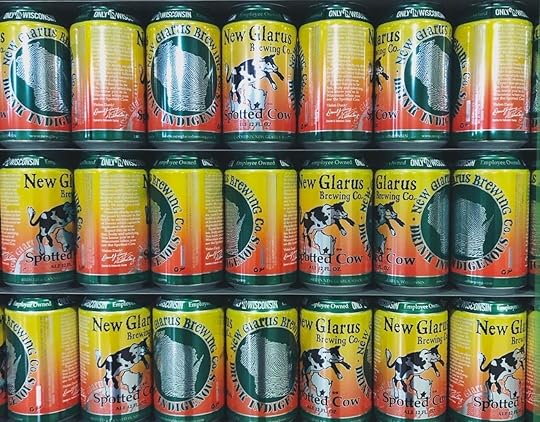
Will the Packers win the game? Did I make enough cherry bounce for when the in-laws visit? Is there enough meat in the freezer? These are the burdens on Wisconsinites’ minds, and our out-of-state friends just don’t understand. Here are 10 more things only people from Wisconsin worry about.
1. How long the wait will be for a Kroll’s butter burger across from Lambeau Field
Is it better to go two hours before the game to get your fix? Or do you wait until after the game and risk waiting hours in line for your favorite post-game meal? This dilemma breaks our brains.
2. How to get Spotted Cow while out of the state
New Glarus Brewery’s most beloved brew is only sold in Wisconsin, making trips out of state painful. Do you try to carry a six-pack in your checked luggage? Hope to be able to buy a few bottles at the airport? Skip the flight altogether and drive 16 hours with a few cases in the trunk?
3. Getting to the farmers market before all the cheese bread is gone
It doesn’t matter if you spent Friday night out at the bars until closing time, everyone knows you have to get to the farmers market by 8:00 AM Saturday morning to ensure you get your loaf of cheese bread before they run out.
4. Accidentally not holding the door open for someone
Or accidentally doing anything inadvertently rude at all. Our Midwest nice nature plagues us with guilt if we aren’t constantly going above and beyond to make people feel comfortable, welcome, and impressed with our impeccable kindness.
5. Missing the meat sale at the Pig
It doesn’t matter if we already have a freezer full of meat because there is a second one in the garage for exactly this purpose. When the Pig has a sale on any kind of meat product, we don’t want to miss out. As soon as the sale paper is out, we’re on our way to the store to stock up.
6. Whether it’ll rain during your Harley ride
Oh, the freedom of endless Up North roads on a sunny day. After waiting all winter long for that first day of spring when we can get out on our bikes again, if there’s even a threat of an unexpected rain shower, we Wisconsinites get in a spin.
7. Whether your friends at church will like the booyah you made
Yes, everyone has their own booyah recipe, and yes, we all want our friends to like it. The first time you cook up a batch to sell at the church charity fundraiser, you are a nervous wreck over whether they’ll think it has made the cut.
8. Running out of beer on the boat
There’s nothing better than a day of drinking games on a boat with friends, but there’s nothing worse than running out of beer. It’s always a good tactic to make friends with the people on the next boat over if you want any hope of keeping the party going.
9. Whether the cheese curds you bought today will still be squeaky tomorrow
On the off-chance you can’t finish the bag the day you buy them, you know if there’s no squeak tomorrow, you can fry those curds up and dip them in ranch.
10. Losing your child in the Wisconsin Dells
We bet you don’t know any Wisconsin parents who haven’t spent part of their Dells vacation trying to find their child in the kiddy play area of the water park. As if that weren’t already stressful enough, adults in the kids area are an easy target for water guns and splash buckets at the hands of other mischievous kids whose parents are probably looking for them, too. 

More like this: 11 things Wisconsinites are weirdly obsessed with
The post 10 things only people from Wisconsin worry about appeared first on Matador Network.

Matador Network's Blog
- Matador Network's profile
- 6 followers



